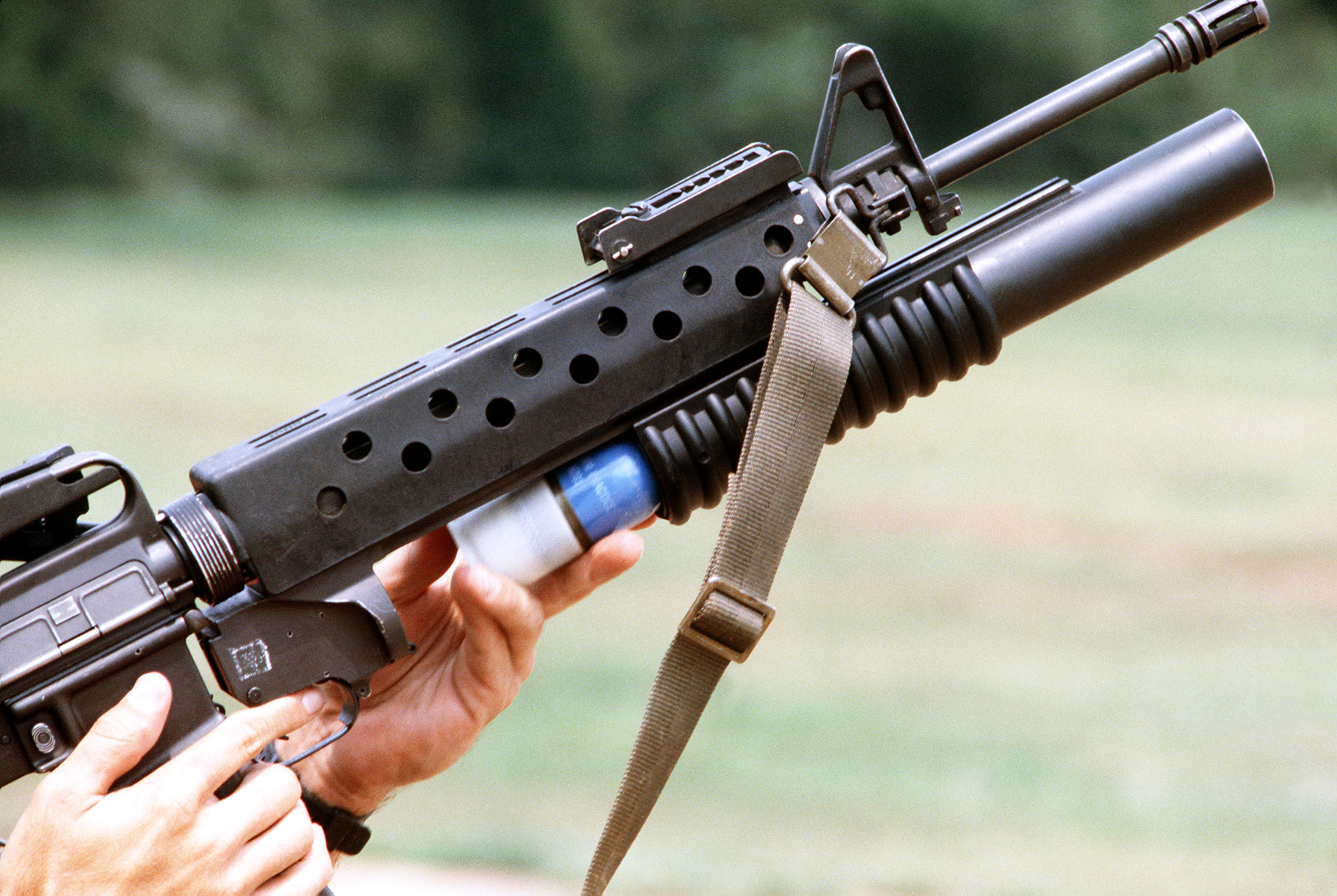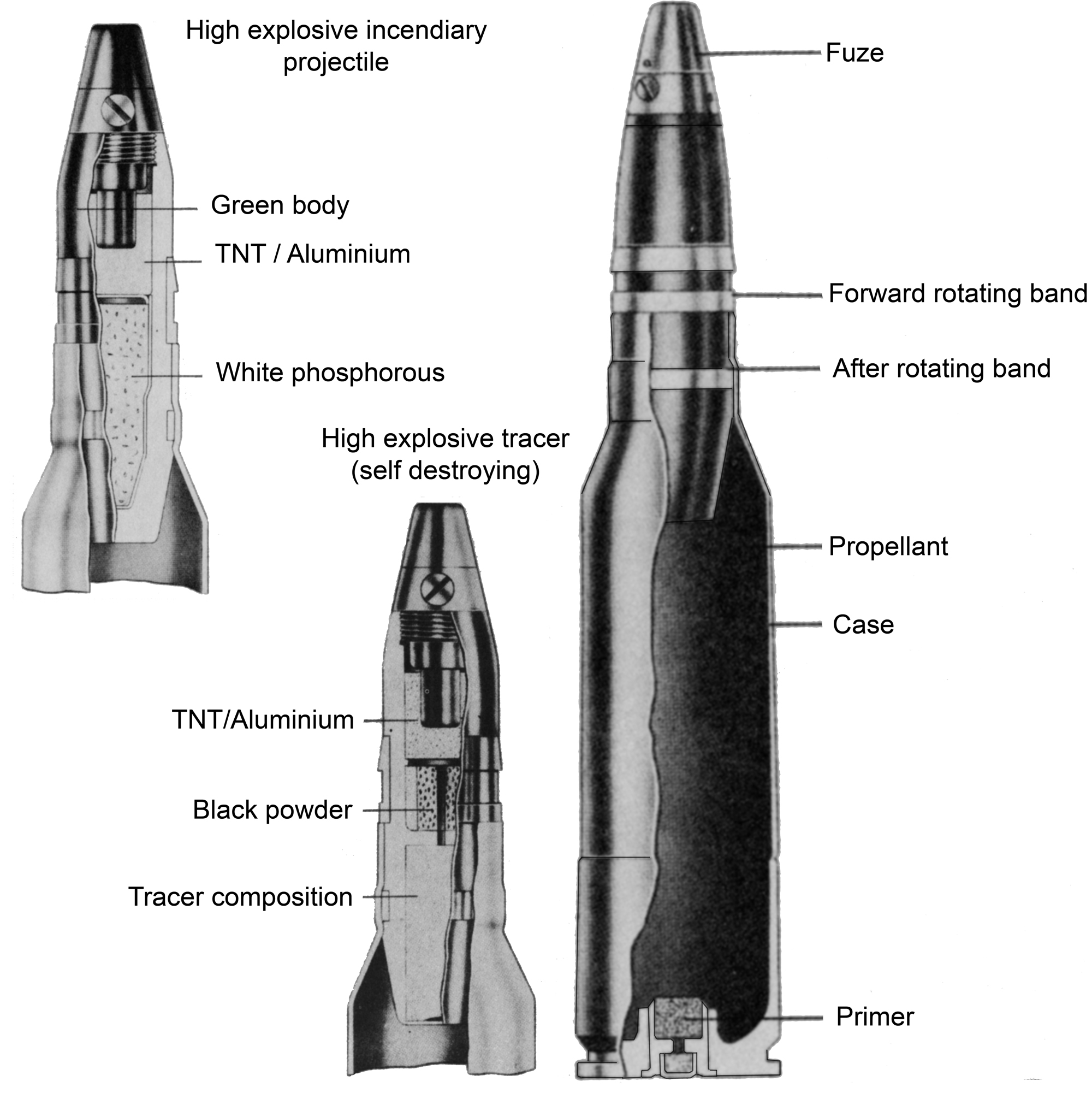|
NATO Cartridge
NATO cartridge may refer to: * Small arms ** 9×19mm NATO (STANAG 4090) ** 5.7×28mm NATO (STANAG 4509) ** 5.56×45mm NATO (STANAG 4172) ** 7.62×51mm NATO (STANAG 2310) ** 12.7×99mm NATO (STANAG 4383) ** 40 mm grenade * Autocannons ** 20×102mm (STANAG 3535), 20 mm caliber ** 25×137mm and 25x184mm (STANAG 4173), 25 mm caliber ** 27x145mm (STANAG 3820), 27 mm caliber ** 30x113mmB and 30×173mm (STANAG 4624), 30 mm caliber ** 35x228mm (STANAG 4516), 35 mm caliber * Tank guns ** 105x617mmR (STANAG 4458) ** 120x570mmR (STANAG 4385) * Artillery ** 105 mm (STANAG 4425) ** 155 mm 155 mm (6.1 in) is a common, NATO-standard, artillery caliber. It is defined in AOP-29 part 1 with reference to STANAG 4425. It is commonly used in field guns, howitzers, and gun-howitzers. Land warfare The caliber originated in France after ... (STANAG 4425) File:9x19mm Parabellum.svg, 9x19 mm File:5.56x45mm NATO.jpg, 5.56x45 mm NATO File:7.62x51 NATO dimensions.png, 7.62x51 mm File:50 bmg 12.7x99 ... [...More Info...] [...Related Items...] OR: [Wikipedia] [Google] [Baidu] |
40 Mm Grenade
40 mm grenade (also styled 40mm grenade) is a generic class-name for grenade launcher ammunition ( subsonic shells) in caliber. The generic name stems from the fact that several countries have developed or adopted grenade launchers in 40 mm caliber. This is a general collection of the world's many different "40 mm grenades". NATO NATO currently uses three standardized 40 mm grenade families: 40 mm low velocity (LV), 40 mm medium velocity (MV), and 40 mm high velocity (HV). Low- and medium-velocity cartridges are used for different hand-held grenade launchers, while the high-velocity cartridge is used for automatic grenade launchers. 40×46 mm LV (40 mm low velocity) ''40×46 mm LV'' (''low velocity'') is a NATO-standard high–low grenade launcher cartridge meant for hand-held grenade launchers, such as the M79, M203, Milkor MGL, and Heckler & Koch AG36. The propellant has low pressure and gives the projectile an average velocity of depending on the ammuniti ... [...More Info...] [...Related Items...] OR: [Wikipedia] [Google] [Baidu] |
20 Mm Caliber
20 mm caliber is a specific size of popular autocannon ammunition. It is typically used to distinguish smaller-caliber weapons, commonly called "guns", from larger-caliber "cannons" (e.g. machine gun vs. autocannon). All 20 mm cartridges have an outside projectile (bullet) diameter and barrel bore diameter of . These projectiles are typically long, cartridge cases are typically long, and most are shells, with an explosive payload and detonating fuze. Weapons using this caliber range from anti-materiel rifles and anti-tank rifles to aircraft autocannons and anti-aircraft guns. Usage Twenty-millimeter-caliber weapons are generally not used to target individual soldiers, but have targets such as vehicles, buildings, or aircraft. Types of ammunition *High explosive (HE) *High explosive incendiary (HEI) *Armor-piercing (AP) * Semi-armor-piercing high explosive incendiary (SAPHEI) *Armor-piercing discarding sabot (APDS) *High explosive fragmentation tracer (HEF-T) * High ex ... [...More Info...] [...Related Items...] OR: [Wikipedia] [Google] [Baidu] |
25 Mm Caliber
25 mm caliber is a specific size of popular autocannon ammunition. It has also been recently used for the Barrett XM109 anti-materiel rifle. Such ammunition includes the NATO-standard 25×137mm and 25×184mm, the Soviet 25x218mmSR, and the Chinese 25×183mmB. Usage The 25 mm round can be used in both an anti-materiel and anti-personnel fashion. When operating in the anti-personnel role, a 25 mm weapon armed with HE rounds can effectively kill large numbers of opposing troops either in the open or in light fortifications. When operating in the anti-materiel role, a 25 mm weapon armed with armor-piercing rounds can disable many aircraft and vehicles, including some main battle tanks. The US military uses 25 mm weapons in their AV-8B Harrier, AC-130 gunship, M2 Bradley, LAV-25, F-35 Lightning II and as a standard ship-based munition in the Mk 38 autocannon. Types of 25 mm ammunition Several sub-types of the NATO 25 mm ammunition are available—the most common ... [...More Info...] [...Related Items...] OR: [Wikipedia] [Google] [Baidu] |
30 Mm Caliber
30 mm caliber is a specific size of popular autocannon ammunition. Such ammunition includes NATO standard 30×113mmB and 30×173mm (STANAG 4624), Soviet 30×155mmB, 30×165mm, and 30×210mmB, Yugoslav 30×192mm, Anglo-Swiss 30×170mm, and Czechoslovak 30×210mm rounds which are widely used around the world. Usage Thirty-millimeter ammunition is typically not used against personnel, but rather as an anti-materiel or armor-piercing round. Rounds of this size can be effective against lightly armored vehicles as well as fortified bunkers. It is also a popular caliber for shipboard close-in weapons systems, such as the Russian AK-630 and Dutch Goalkeeper CIWS. The Armed Forces of the Russian Federation use their 30 mm weapons in a variety of vehicles, including the Su-25 attack aircraft, Mi-24 helicopter, Mi-28 attack helicopter, Ka-50 attack helicopter, and the BMP-2, BMP-3, and BTR-90 infantry fighting vehicles. The most modern anti-aircraft gun systems in use by R ... [...More Info...] [...Related Items...] OR: [Wikipedia] [Google] [Baidu] |
35 Mm Caliber
{{Numberdis ...
35 or XXXV may refer to: * 35 (number), the natural number following 34 and preceding 36 * one of the years 35 BC, AD 35, 1935, 2035 * ''XXXV'' (album), a 2002 album by Fairport Convention * '' 35xxxv'', a 2015 album by One Ok Rock * "35" (song), a 2021 song by New Zealand youth choir Ka Hao * "Thirty Five", a song by Karma to Burn from the album ''Almost Heathen'', 2001 * III-V, a type of semiconductor material A semiconductor is a material which has an electrical conductivity value falling between that of a conductor, such as copper, and an insulator, such as glass. Its resistivity falls as its temperature rises; metals behave in the opposite way. ... [...More Info...] [...Related Items...] OR: [Wikipedia] [Google] [Baidu] |
105×617mm
1 (one, unit, unity) is a number representing a single or the only entity. 1 is also a numerical digit and represents a single unit of counting or measurement. For example, a line segment of ''unit length'' is a line segment of length 1. In conventions of sign where zero is considered neither positive nor negative, 1 is the first and smallest positive integer. It is also sometimes considered the first of the infinite sequence of natural numbers, followed by 2, although by other definitions 1 is the second natural number, following 0. The fundamental mathematical property of 1 is to be a multiplicative identity, meaning that any number multiplied by 1 equals the same number. Most if not all properties of 1 can be deduced from this. In advanced mathematics, a multiplicative identity is often denoted 1, even if it is not a number. 1 is by convention not considered a prime number; this was not universally accepted until the mid-20th century. Additionally, 1 is ... [...More Info...] [...Related Items...] OR: [Wikipedia] [Google] [Baidu] |
120×570mm
1 (one, unit, unity) is a number representing a single or the only entity. 1 is also a numerical digit and represents a single unit of counting or measurement. For example, a line segment of ''unit length'' is a line segment of length 1. In conventions of sign where zero is considered neither positive nor negative, 1 is the first and smallest positive integer. It is also sometimes considered the first of the infinite sequence of natural numbers, followed by 2, although by other definitions 1 is the second natural number, following 0. The fundamental mathematical property of 1 is to be a multiplicative identity, meaning that any number multiplied by 1 equals the same number. Most if not all properties of 1 can be deduced from this. In advanced mathematics, a multiplicative identity is often denoted 1, even if it is not a number. 1 is by convention not considered a prime number; this was not universally accepted until the mid-20th century. Additionally, 1 is the s ... [...More Info...] [...Related Items...] OR: [Wikipedia] [Google] [Baidu] |
105 Mm
1 (one, unit, unity) is a number representing a single or the only entity. 1 is also a numerical digit and represents a single unit of counting or measurement. For example, a line segment of ''unit length'' is a line segment of length 1. In conventions of sign where zero is considered neither positive nor negative, 1 is the first and smallest positive integer. It is also sometimes considered the first of the infinite sequence of natural numbers, followed by 2, although by other definitions 1 is the second natural number, following 0. The fundamental mathematical property of 1 is to be a multiplicative identity, meaning that any number multiplied by 1 equals the same number. Most if not all properties of 1 can be deduced from this. In advanced mathematics, a multiplicative identity is often denoted 1, even if it is not a number. 1 is by convention not considered a prime number; this was not universally accepted until the mid-20th century. Additionally, 1 is the ... [...More Info...] [...Related Items...] OR: [Wikipedia] [Google] [Baidu] |
155 Mm
155 mm (6.1 in) is a common, NATO-standard, artillery caliber. It is defined in AOP-29 part 1 with reference to STANAG 4425. It is commonly used in field guns, howitzers, and gun-howitzers. Land warfare The caliber originated in France after its defeat in the Franco-Prussian War of 1870–1871, when an artillery committee met on 2 February 1874 to discuss new models for the French fortress and siege artillery, among which there was a piece in the caliber range (later on it became known as the De Bange 155 mm cannon). After several meetings, on 16 April 1874 the committee settled on the 15.5 cm caliber (in the subsequent program-letter of the committee, dating from 21 April 1874, the caliber was for the first time expressed as 155 mm). Since the early 21st century, most NATO armies have adopted 155 mm weapons as an all-purpose standard. They are seen as striking a good compromise between range and power, while only using a single caliber greatly simplifies the logi ... [...More Info...] [...Related Items...] OR: [Wikipedia] [Google] [Baidu] |
Cartridge Families
Cartridge may refer to: Objects * Cartridge (firearms), a type of modern ammunition * ROM cartridge, a removable component in an electronic device * Cartridge (respirator), a type of filter used in respirators Other uses * Cartridge (surname) Cartridge is a surname in the English language, and is considered to be an English surname. The name is thought to be possibly a variant form of the surname ''Cartwright''. According to etymologist P. H. Reaney, the earliest record of the surname ' ..., a surname * Cartridge Creek, a creek near Fresno, California, United States See also * * {{Disambiguation ... [...More Info...] [...Related Items...] OR: [Wikipedia] [Google] [Baidu] |



